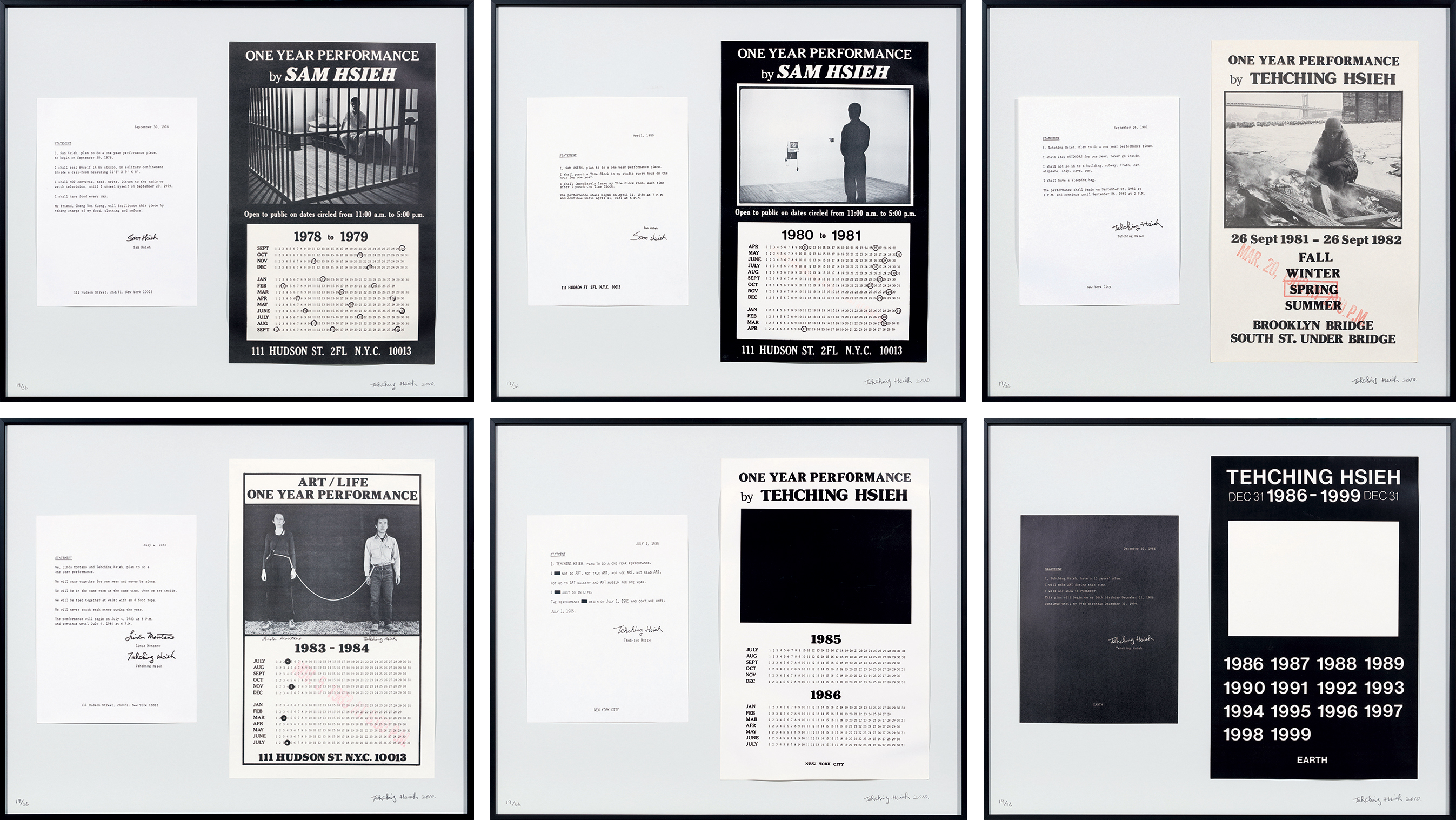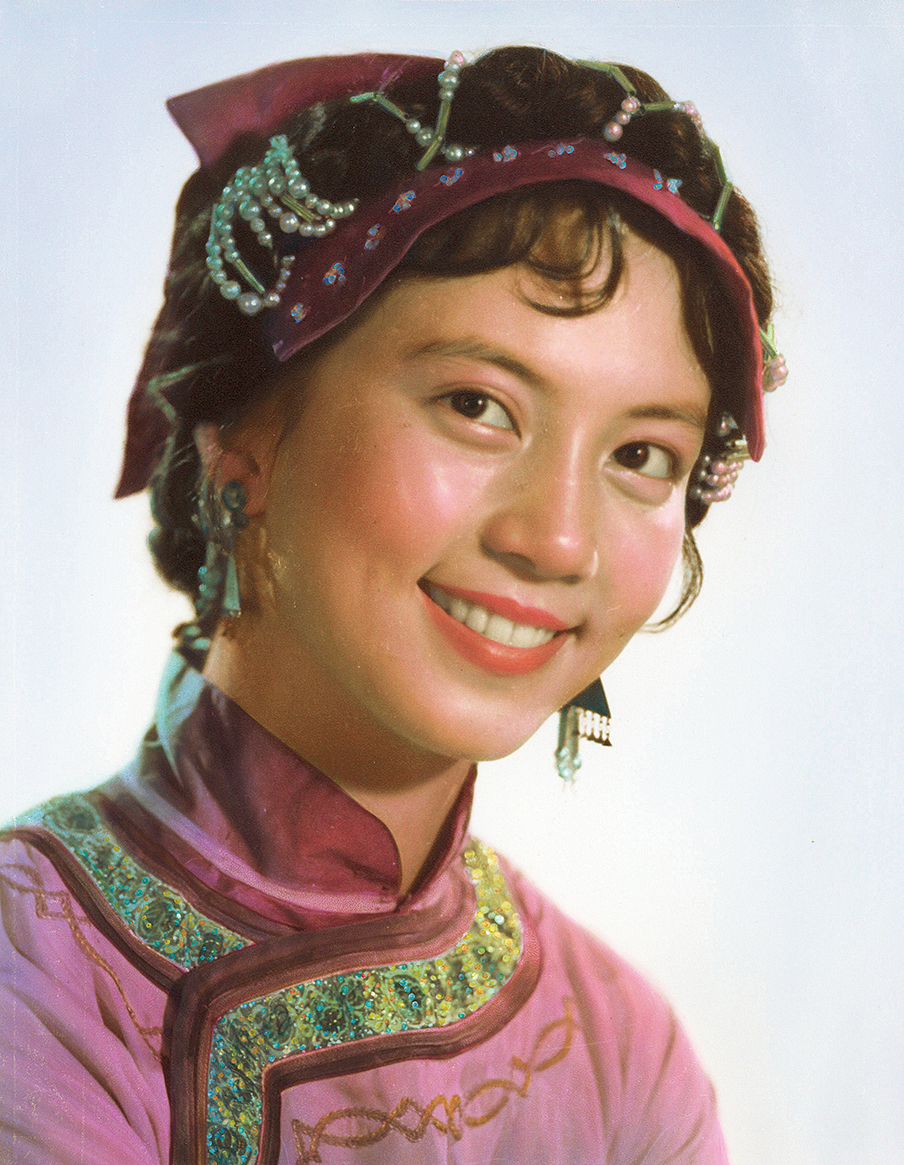
Tehching Hsieh
Posters and Statements of Six One-Year Performances
1999
Printed Posters and Statements on Paper
Tehching Hsieh was born in 1950 in Nanzhou, Taiwan, and is regarded as a pioneering artist who measures life through time. He began his career as a painter before illegally immigrating to the United States in 1974, where he lived as an undocumented immigrant for 14 years. Hsieh is renowned for his extreme performance art. Between 1978 and 1999, he completed six landmark works, five of which were part of his One-Year Performances. After 1986, he embarked on Thirteen Year Plan, declaring that “just living” would be his art, a statement he upheld until 2000, when he formally concluded his artistic practice and withdrew from the art world. His performances pushed the limits of endurance, challenging the boundaries of freedom, existence, and institutional control. Marina Abramović, the mother of performance art, once hailed him as a “hero.” Hsieh’s work has profoundly shaped contemporary artistic philosophy on the nature of life itself, with his archives collected by major institutions worldwide and exhibited on international platforms such as the Venice Biennale.
Tehching Hsieh is renowned for his unique performance art. Posters and Statements of Six One-Year Performances meticulously document his artistic philosophy and bold artistic experiments at different stages of his career. These posters and statements fully illustrate his fearless challenges to the boundaries of art. The poster for Cage Piece documents a performance artwork created in a Brooklyn loft, where Tehching confined himself alone inside a cage measuring less than six square meters for an entire year. Six months after emerging from the cage, he began his second One-Year Performance, which is depicted in the poster for Time Clock Piece. In 1980, Tehching was required to punch a time clock once every hour, 24 times a day, without interruption, for an entire 365 days in his studio. The poster for Outdoor Piece corresponds to a performance artwork created in 1981, when Tehching lived entirely outdoors, never entering any form of shelter, including buildings, tunnels, caves, tents, cars, trains, airplanes, or ship cabins.
Rope Piece was created in 1983. In this performance, Tehching and female artist Linda Montano were tied together with a 2.43-meter-long rope but were not allowed to touch each other. Throughout the year, they frequently experienced conflict, with tensions escalating to the point where they considered cutting the rope to end the performance. However, both remained committed to completing the work, ultimately regaining composure and continuing the piece. The poster for No Art Piece reflects Tehching’s one-year experiment in which he refrained from talking about, viewing, or reading about art. During this time, he did not enter galleries or museums and instead focused solely on living an ordinary life. The poster for Thirteen Year Plan documents a performance artwork that spanned 13 years, beginning on Tehching’s 36th birthday and concluding on his 49th birthday. During this period, he continued creating art but never exhibited or publicly shared his work. In 1986, after completing his five One-Year Performances, Tehching disappeared from the public eye. On the first day of the new millennium in 2000, he declared the completion of his 13-year artwork with the statement “I am still alive” at the Johnson Memorial Church in New York. Following this, Tehching ceased creating art.


